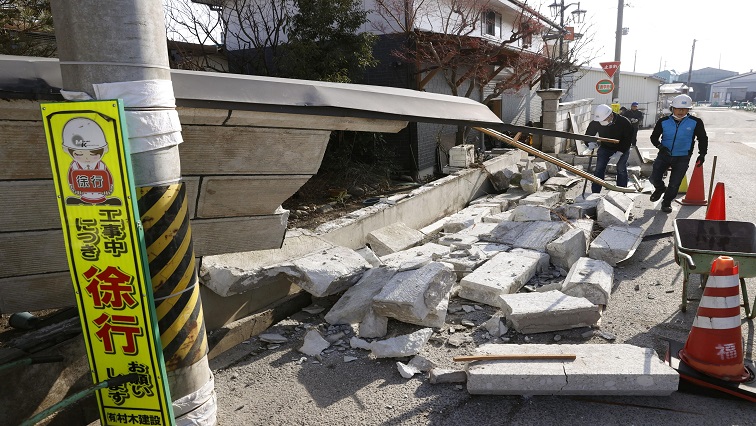The stench of alcohol filled the small bar on Sunday as Aoi Hoshino swept up glass from whiskey bottles smashed in a strong earthquake the night before, one appearing to be an aftershock from a devastating quake that hit the Fukushima area in 2011.
The 7.3 magnitude quake struck shortly before midnight Saturday and cracked walls, shattered windows and set off a landslide in Fukushima, the area closest to the epicentre. More than 100 people were injured.
Hoshino, 46, swept broken glass from some 20 shattered whiskey bottles into a bin bag in her bar on a back street in the city of Iwaki, roughly 200 km (124 miles) north of Tokyo and not far from the quake’s epicentre.
“We were hit by this coronavirus pandemic, and so we were looking forward to reopening our shops, and now this happens,” she said, referring to a locally-declared state of emergency that had closed her bar from January and was set to lift on Monday.
“It’s just one thing after another.”
The Japan Meteorological Agency said the quake was believed to be an aftershock from the magnitude 9.0 quake on March 11, 2011 that set off a tsunami, killing nearly 20,000 people along a wide swathe of northeastern Japan, and the Fukushima nuclear accident, the world’s worst in 25 years. The agency warned of aftershocks for several days.
Hoshino said Saturday’s quake brought back frightening memories.
“My body immediately reacted, and I couldn’t stop trembling. My legs were shaking too, but I couldn’t gauge whether it was safer to run out or stay in, so I ended up doing a weird little dance,” she said with a chuckle.
At least 121 people were injured, NHK national television said, including several who suffered fractures, but there were no reported deaths.

BUILDINGS SHOOK IN TOKYO
The 11:08 p.m. local (1408 GMT) quake shook buildings in the Japanese capital Tokyo, cutting power to hundreds of thousands of buildings across eastern and northeastern Japan. By morning, though, power was restored to virtually all.
Several thousand households remained without water, forcing residents lined up with plastic jugs to receive water from trucks.
Though much of Iwaki appeared as usual, tiles had fallen from the front of at least one building, and the sound of broken glass being swept up echoed from several shops and restaurants.
On the wall of Noboru Endo’s hair salon a hairline crack had opened, in the same place a wider one opened 10 years ago, but otherwise there was little damage.
Endo, 64, said Saturday’s quake didn’t compare to the 2011 quake, which went on for several minutes and had aftershocks that lasted weeks.
“We’ve all pretty much gone back to life as usual, save a few areas that are still badly affected,” he said of reconstruction efforts in the area.
There was no tsunami, and no reports of irregularities at any nuclear plants. NHK reported that about 160 mls (5 ounces) of water had leaked from a spent fuel pool at the Fukushima Dai-Ni reactor but that this presented no danger.
Shinkansen bullet train service to much of northern Japan was suspended due to damage along the tracks. Service along one line was not expected to be restored until at least Tuesday.
The power outages did not affect any of the Pfizer Inc COVID-19 vaccines that arrived on Friday for inoculations that are to start this week, Chief Cabinet Secretary Katsunobu Kato told a Sunday morning news conference.
Earthquakes are common in Japan, one of the world’s most seismically active areas, and Japan accounts for about 20% of the world’s earthquakes of magnitude 6 or greater.


